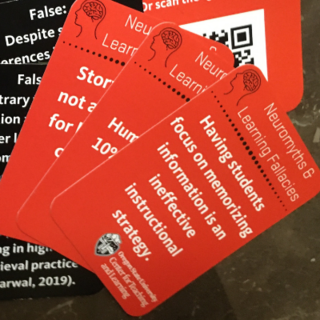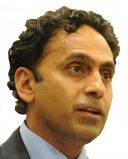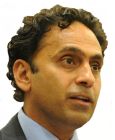Education
Effective Teaching: What Exactly Is it?
College teaching is hard to measure but there are ways to capture effectiveness.
Posted June 27, 2022 Reviewed by Ekua Hagan
Key points
- Evaluating effective teaching needs multiple measurements (self, peer, student, reports).
- Teaching evaluations are biased by a range of factors.
- There is no gold standard to measure effective teaching; faculty and administrators must determine what they find important.

"That was the best class ever!"
"She is the best professor on campus."
"That class made waking up at noon worth it."
These are the kinds of student comments that professors (and probably their parents) would love to hear. Students often rave about satisfying learning experiences. Of course, one is also likely to hear horror stories of poorly designed courses or faculty who seem to lack pedagogical skills, content knowledge, motivation to teach, or all three. The last two years saw an additional focus on learning as students switched to remote learning. While most students know they have a chance to evaluate their classes at the end of the semester, this is certainly not the only way teaching is measured. Here is a quick primer on how teaching is evaluated.
What Is Good Teaching?
Is good teaching like good art? Different people like different types of art, and while there are various styles of art and techniques, what makes good art is hotly debatable to the average museum-goer, let alone to the art critic.
Good teaching is likewise described differently by different individuals. Some students like classes that are all lecture and no group work or any form of active learning. Other students like classes with humor and instructors with energy. Not everything that students like is associated with better learning. For example, we know that even though students would rather be passive and say they do not like active learning, they actually learn more in classes with active learning activities.
Higher education has tried to measure teachers in an intentional and systematic manner since at least the 1920s. The Association of American Colleges led early efforts to measure teaching but even by the 1960s, most college faculty were evaluated by anecdote, if they were evaluated at all. College professor evaluations based on K-12 teacher evaluations or measures of industry productivity did not gain traction. While administrators first led the charge to show the taxpayers and tuition-paying public what students were getting, faculty organizations such as the American Association of University Professors also tried their hand at measurement.
Many early measures focused on traits and characteristics of teachers, some of them laughable. For example, professors were often rated on how they dressed and how they looked, and sometimes how engaging or dynamic they were. Though peer anecdote soon gave way to self-evaluations, colleges and universities started to have a peer visit a professor’s class and provide an observation. By the 1970s, this method soon gave way to student evaluations, a method that quickly took over given how easy it is to do and the strong student support for having a hand in evaluations.
A separate category of measures focused on what students were learning. It seems obvious that good teachers should have students who learn well. While looking at learning, more formally discussed as accomplishment of Student Learning Outcomes, makes good intuitive sense, there are many factors that influence learning (e.g., prior experiences, privilege) and this too fell by the wayside.
What Do We Know About Effective Teaching?
In the last 100 years, we now have a good sense of how to measure teaching. A variety of different perspectives have dovetailed to provide a good idea of what makes strong teachers. Studies of exceptional teachers and detailed examinations of the evidence of model teaching show the fundamental hallmarks of effective teaching are clear—strong course design (what a student does in class and the exams and assignments they complete all map onto the stated student learning outcomes for the course), clear student-centered syllabi, instructor knowledge of content, the use of effective instructional methods (e.g., fostering active learning) and inclusive teaching practices. Many of these hallmarks of effective teaching can be demonstrated by a collection of course materials showing evidence of the practices used.
How Do You Measure Effective Teaching?
There is no gold standard to measure effective teaching. While this may seem like bad news, it provides both faculty and administrators with the opportunity to focus first on what they find most important and then select the way to assess it. Unfortunately, because there is no set standard, it is easy to overly rely on commonly used student evaluations of teaching (SET). It is now also clear that SETs can be influenced by a number of factors such as course difficulty, race and gender of instructor, instructor’s presentation style, and even chocolate. Indeed, students who were given chocolate just before completing evaluations rated their professors better.
There are numerous ways to measure teaching, each varying in how they were developed, the extent to which they are validated, the extent they require supporting evidence, and how they are used. Studies combining the results of a large amount of research, show a significant relationship of evaluations to student achievement which is good news for us all.
The best way to capture effective teaching is to use many ways. Self-reflection, peer observation, and the review of course materials are all good measures and should be used to supplement information from SETs. That said, a disturbing trend is that fewer students complete evaluations. While it is the responsibility of the university to have multiple measures of teaching both for general reporting, for the professor’s self-development, and to ensure future students have a better experience, it is important for every student to take the time to constructively evaluate their faculty.
Yes, students can share stories about poor classes (“Can you believe what Prof. X does?”) and also the great ones (“You must take Prof. Ys class!), but evaluating effective teaching is important for the future of higher education and for the support and evolution of faculty development. If you have a chance to evaluate, please do it.
References
Gurung, R. A. R. (2022). Foster inspiring teaching in higher ed: Beyond student evaluations.
Richmond, A. S., Boysen, G. A., & Gurung, R. A. R. (2022). An evidence-based guide to college and university teaching: Developing the model teaching criteria. Routledge.




